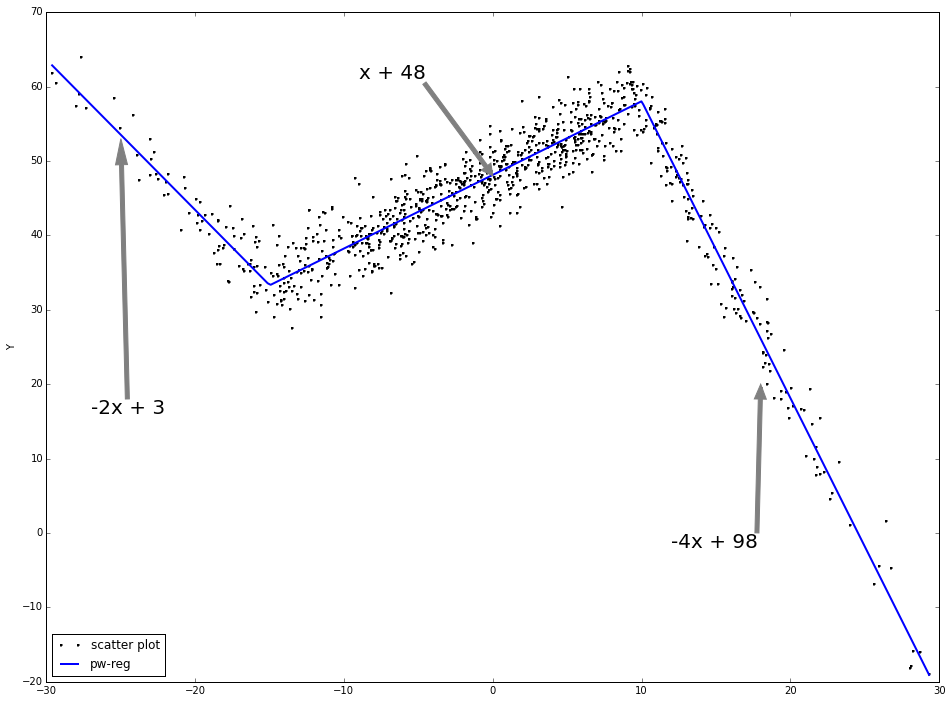
Plot the association between fev and height and fit a linear model for fev using height as a predictorįit a model for fev with a cubic b-spline for the predictor height, with \(df\) 5 and 10.įit a model for fev with a natural cubin spline for the predictor height, with \(df\) 5 and 10. The dataset fev.csv contains the measurements of forced expiratory volume (FEV) tests, evaluating the pulmonary capacity in 654 children and young adults.
#Piecewise linear code#
10 <- train( form = chd.f ~ ns(tobacco, df= 10), data = SA_heart, method = "glm", family = "binomial", trControl = trC.lm, metric = "ROC") roc.l roc. The idea behind piecewise linear regression is that if the data follows different linear trends over different regions of the data, as shown before, then we should model the regression function in pieces. The code in this repository is the code behind results in published work: 'Piecewise-linear modelling with automated feature selection for Li-ion battery end-of-life prognosis'.Questions regarding the code should be sent to either or both of: .ac. Two approaches to this concept will be presented. The advantage of this approach is that we then have a linear problem to which any LP algorithm, such as LINGO, can be applied. One of these is to divide the nonlinear functions into several linear sections (piecewise linearization). 5 <- train( form = chd.f ~ ns(tobacco, df= 5), data = SA_heart, method = "glm", family = "binomial", trControl = trC.lm, metric = "ROC") #cubic effect roc. Various approaches exist for solving non-linear problems.

This way it is better #to use an outcome variable with strings as the factor names SA_heart $chd.f <- ifelse(SA_heart $chd = 1, "chd", "nochd") #sets the control for 10-fold cross-validation, 10 times # the classProbs = TRUE and summaryFunction = twoClassSummary # store the information to compute the area under the ROC trC.lm <- trainControl( method = "repeatedcv", number = 10, repeats = 10, classProbs = TRUE, #necessary for summaryFunction = twoClassSummary) #the AUC ROC #linear effect roc.l <- train( form = chd.f ~ tobacco, data = SA_heart, method = "glm", family = "binomial", trControl = trC.lm, metric = "ROC") roc. Library(caret) library(splines) set.seed( 2001) SA_heart <- read.csv( "") # caret will give an error for factors coded as 0 and 1 # because it uses the factors names to create # names of internal variables. We can further require continuity, meaning that the segments have toĪgain, the knots need to be specified and the regression equation becomes: In mathematics and statistics, a piecewise linear, PL or segmented function is a real-valued function of a real variable, whose graph is composed of. An alternative to fit all data points with a single polynomial curve, is toįit segments to different parts of the data, with breakpoints (knots) at


 0 kommentar(er)
0 kommentar(er)
